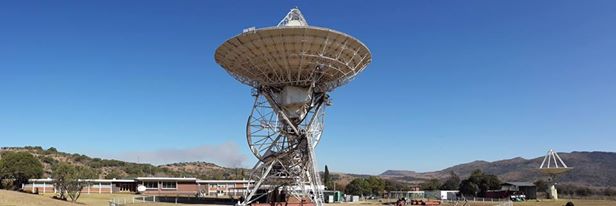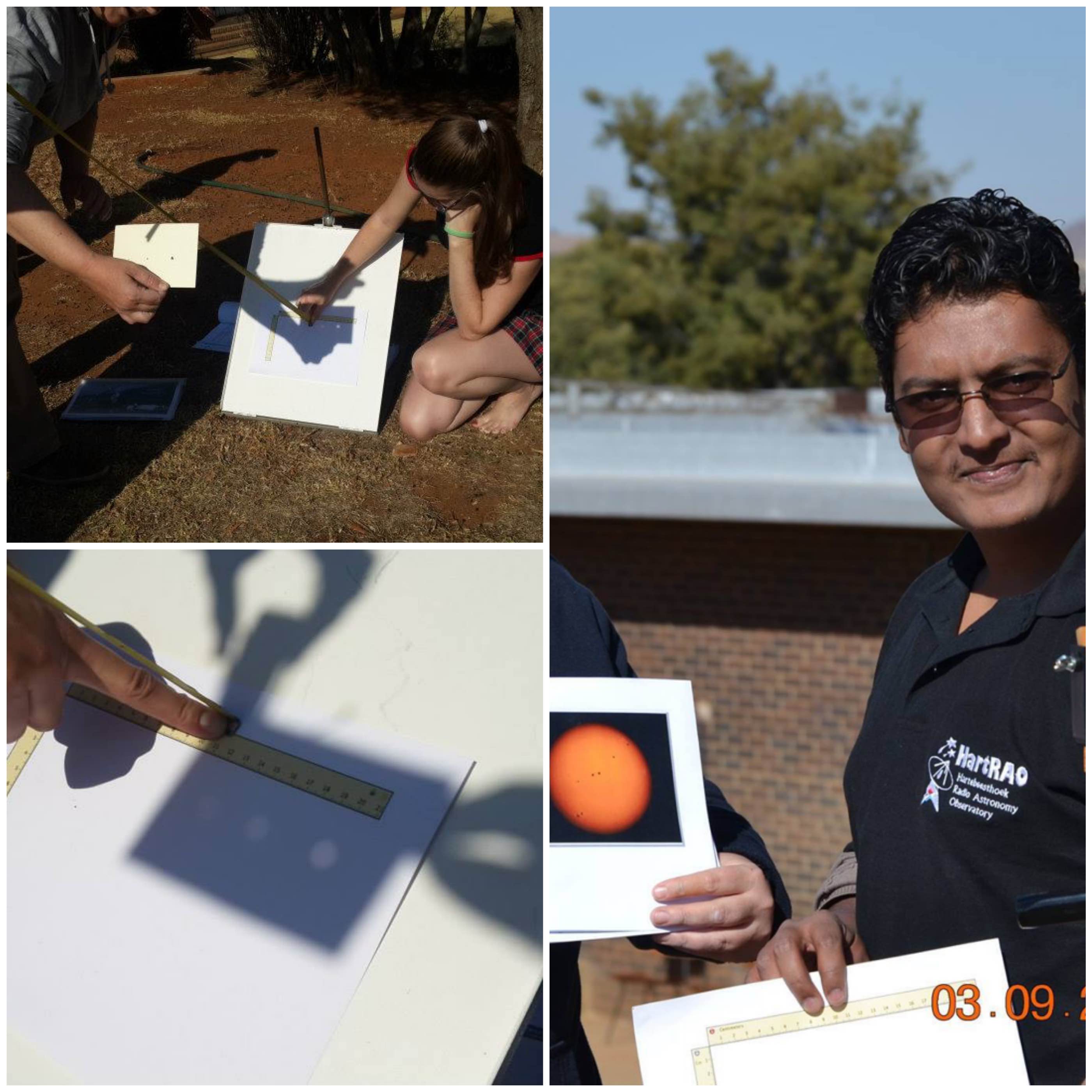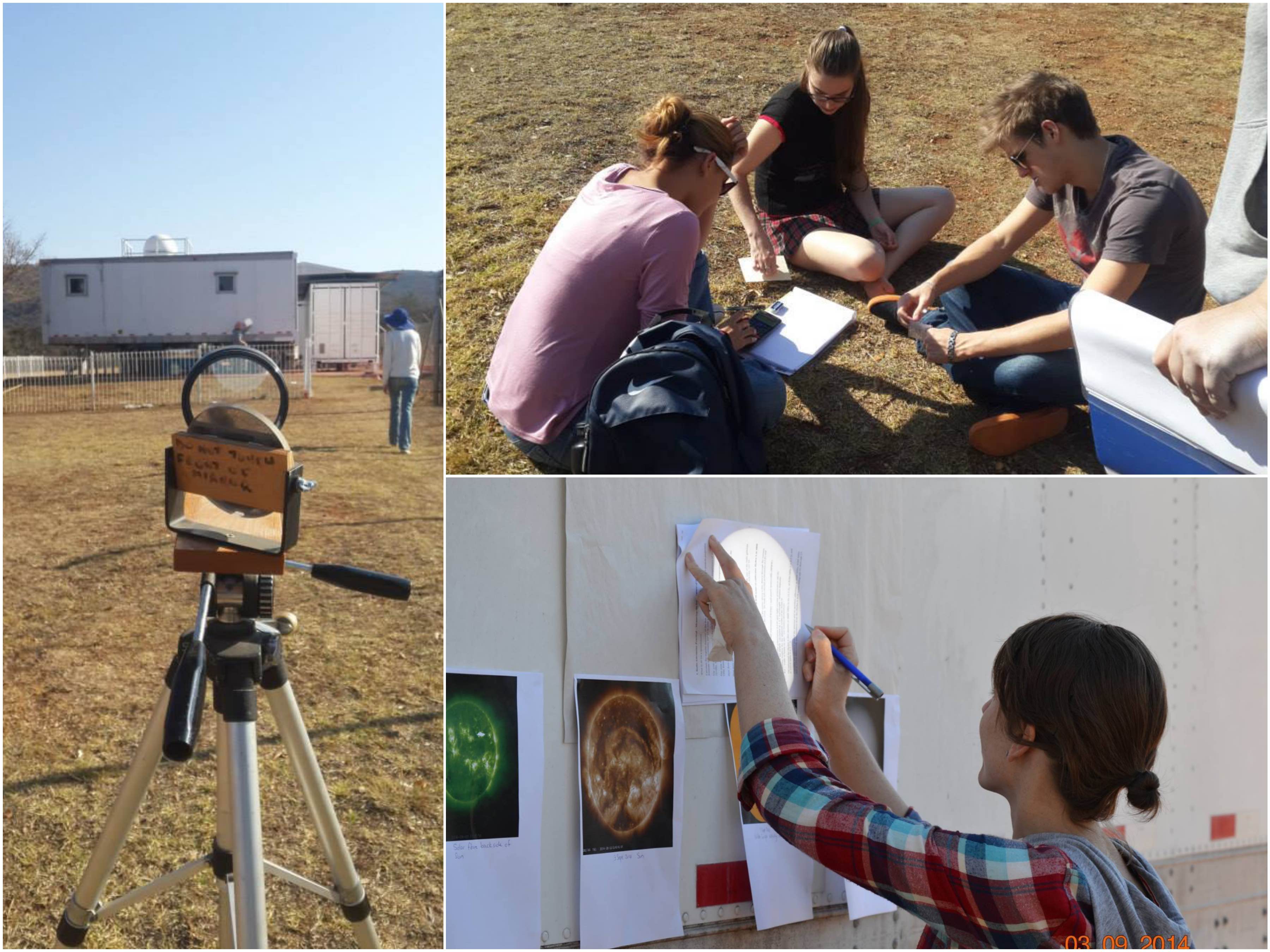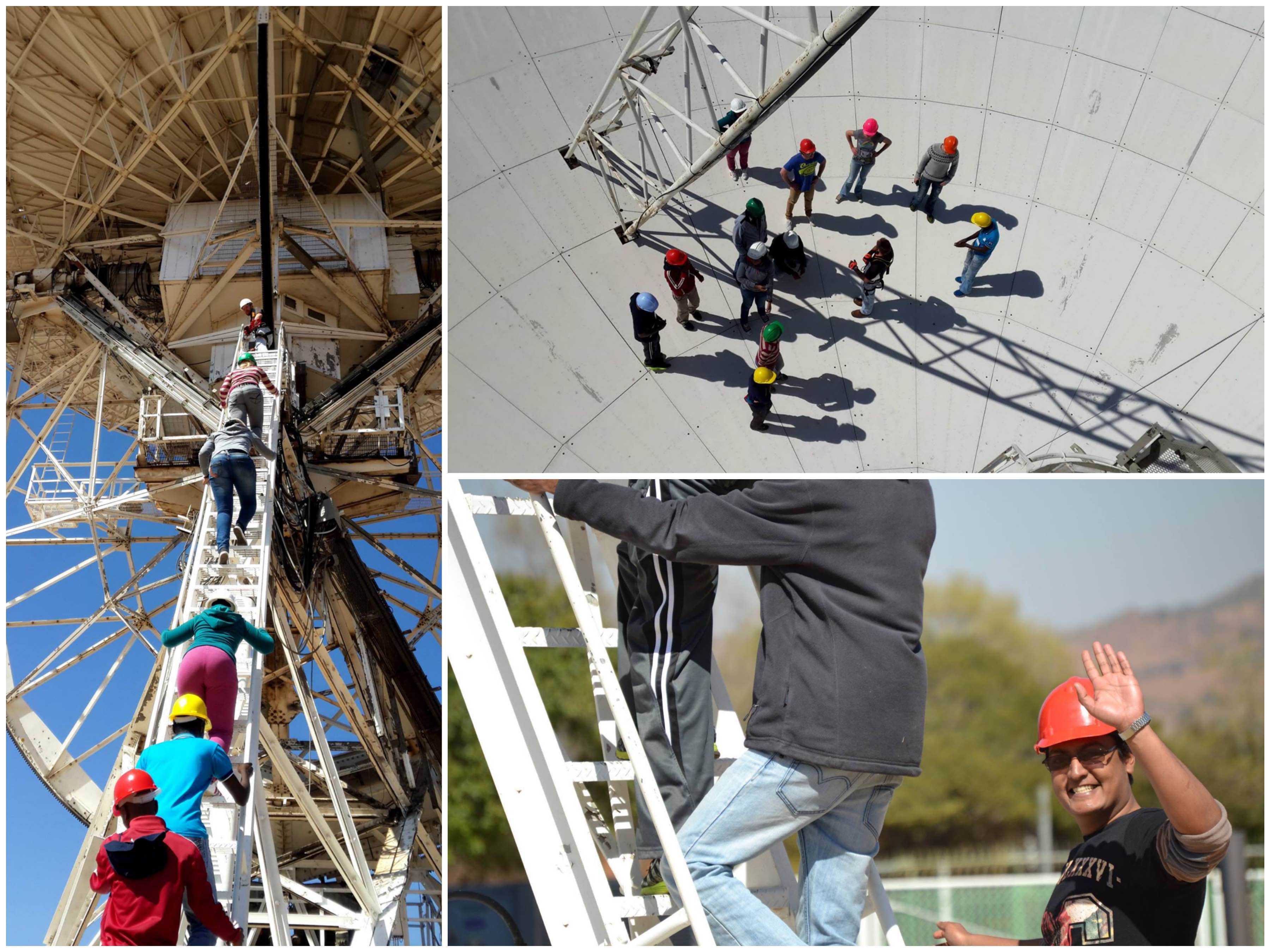Report
South Africa has a long history of excellence in astronomy, a sound high-tech infrastructure and clear skies. Researchers from around the region have joined forces to create a cooperative, combined graduate programme where African students and the rest of the World can study under the guidance of some of South Africa's leading scientists.
The Hartebeesthoek Radio Astronomy Observatory (HartRAO) is a radio astronomy observatory located in a natural bowl of hills at Harteesthoek just south of the Magaliesberg mountain range, Gauteng, South Africa, about 50 km west of Johannesburg. It is a National Research Facility run by South Africa's National Research Foundation. HartRAO was the only major radio astronomy observatory in Africa until the construction of the KAT-7 test bed for the future MeerKAT array.

Panoramic View of HartRAO's 26.0 m radio telecope and 15.0m radio telescope (built in 2007 as a prototype for Karoo Array Telescope, later MeerKAT).
Photo courtesy: Arvind Ramessur
The Honours class of sixteen students from the National Astrophysics and Space Science Programme (NASSP) spent a week at Hartebeesthoek Radio Astronomy Observatory (HartRAO) in early September 2014, learning about radio astronomy in a hands-on way.
The photos below give the flavour of how the practical was conducted:
Introducation to Astronomy and the Radio Universe.

Astronomer Marion West introduced the students to HartRAO, its history, and the astronomy research carried out here. Below: Talk on OH/IR Stars. Details (Explanation of the time series of the red and blue shifted peaks of a detected radio spectrum of the OH/IR stars).
What is the Temperature of our Sun?
The students used a domestic DSTV antenna and radiometer as a simple radio telescope to measure the emission from the Sun at a frequency 12 GHz, from which they later derived the brightness temperature of the Sun at that frequency. Note that they used an eccosorb as a "hot load" to calibrate a 4 GHz satellite dish equipped with a radiometer so as to operate as a radio telescope.
What is the size of our Sun?

The students measured the angular diameter of the Sun using pinhole projection as demonstrated with the tools we presented.
How to detect and what causes Sun spots?

Visiting the 26.0 m radio telescope:

Climbing through the structure of the declination platform of the 26.0m telescope to see its drive and receiver systems close up. The students got an opportunity to see the telescope's control equipment and signal processing backends.
About Me
Contact
| Location: | Johannesburg, Gauteng South Africa  |
|---|---|
| Website: | www.hartrao.ac.za |
| Social Media: | Twitter |








Comments